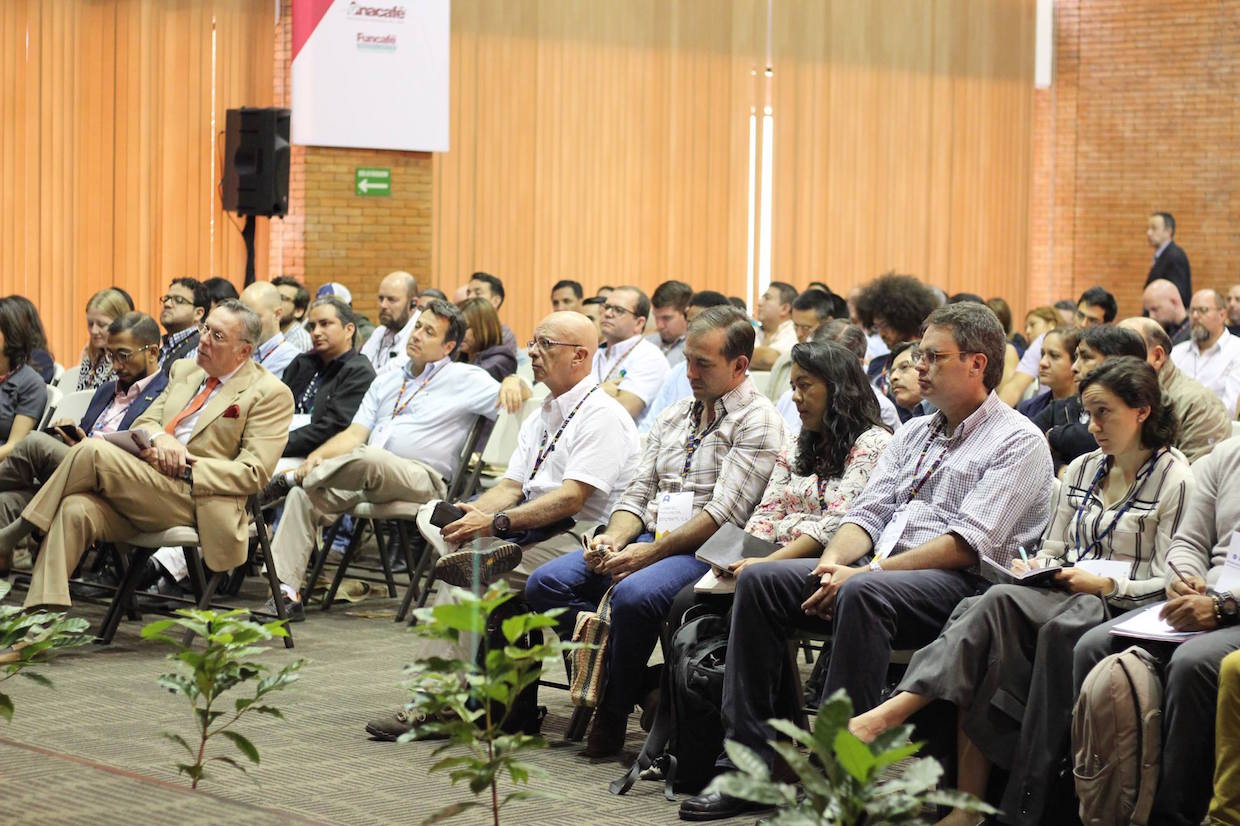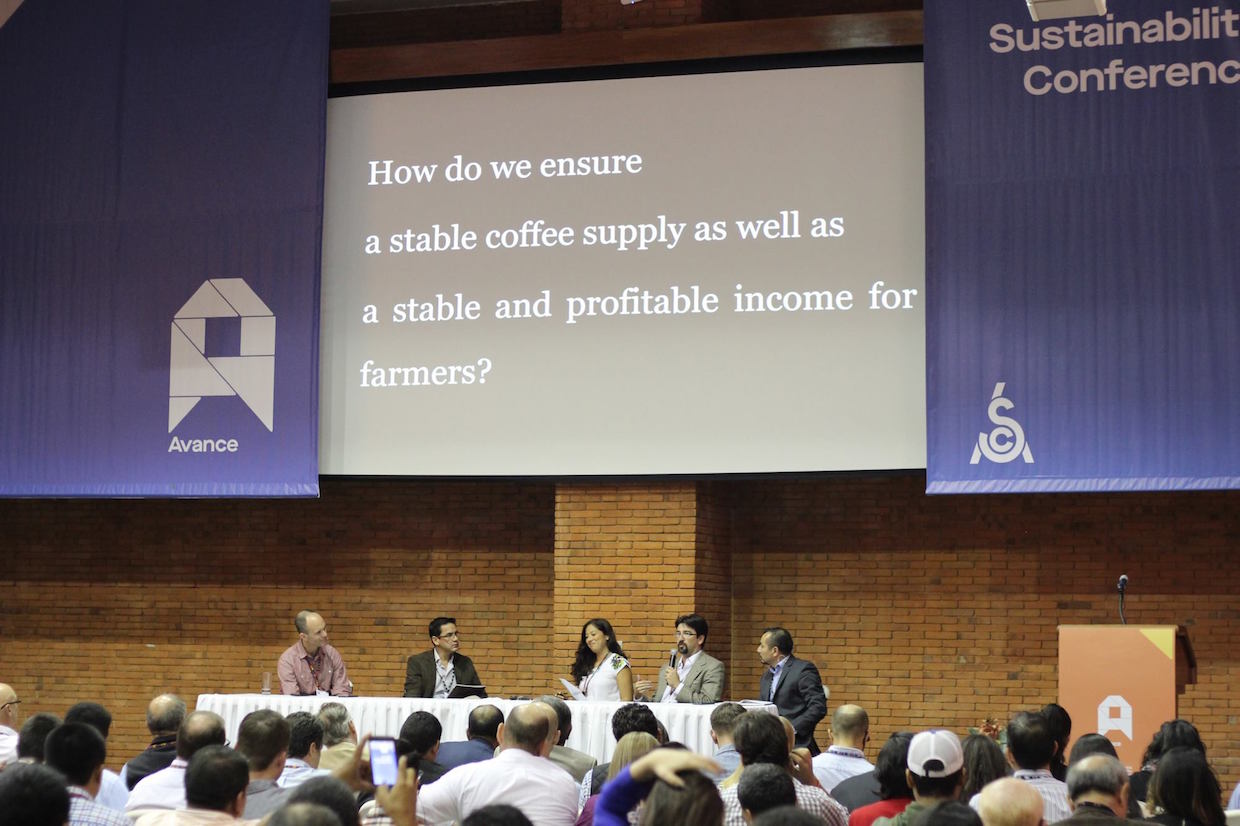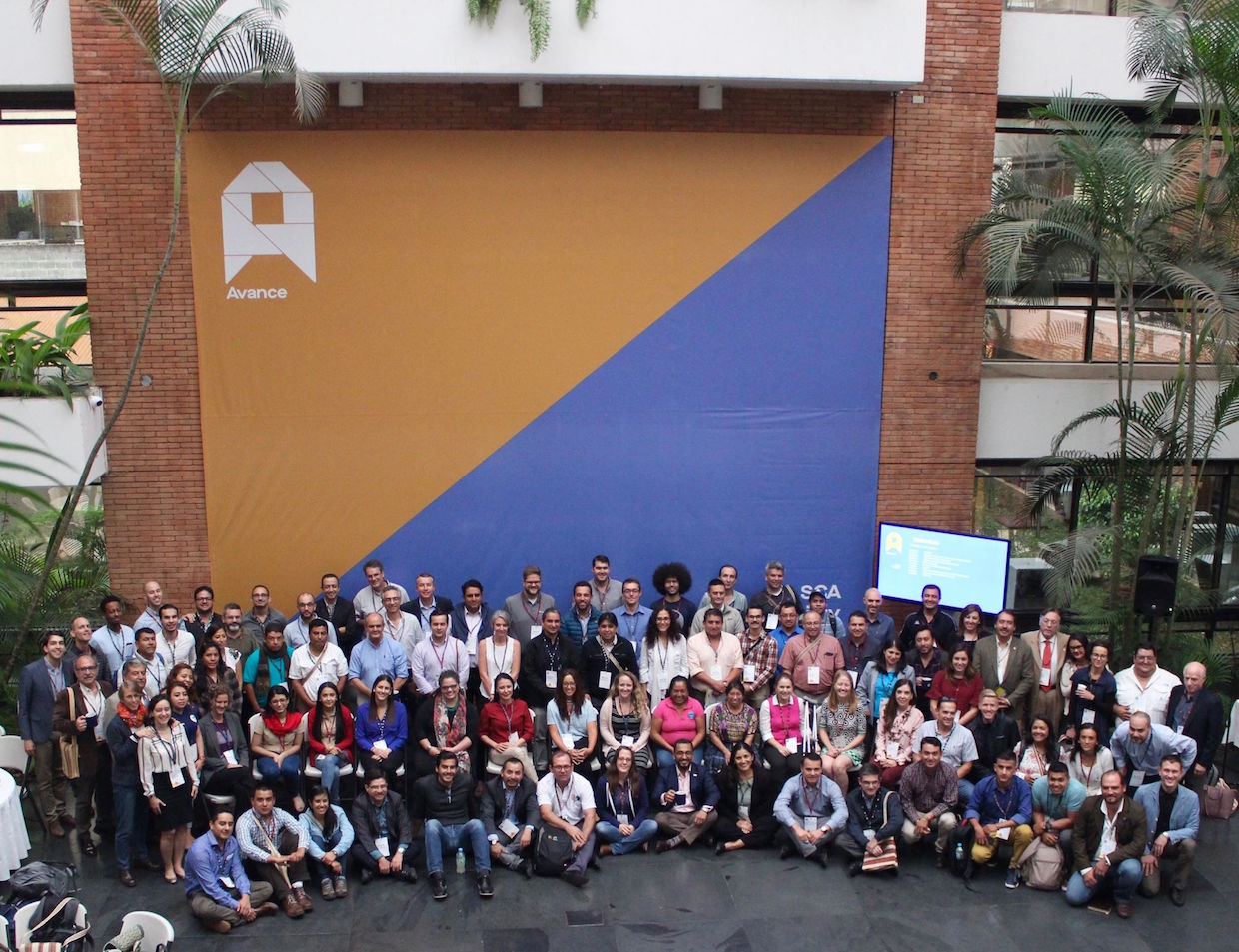
Attendees take in a session at Avance sustainability event in Guatemala City, where the SCA report was unveiled. All photos courtesy of SCA.
Back in 2015, a group of volunteers within the Sustainability Council of what was then the Specialty Coffee Association of America (SCAA) identified the profitability of coffee farming as an area of strategic focus in advancing sustainability goals throughout the coffee sector.
A major component of profitability is cost, and to this day, the overwhelming majority of information regarding profitability and costs among coffee producers has been anecdotal and locally or regionally derived, while generally existing in a silo. So the group commissioned the agriculture research firm RD2 Vision to lead a strategic review of the existing literature on production costs in the coffee sector that could provide insight to decision-makers seeking to maximize farm profitability.
The report was unveiled last week at the inaugural Specialty Coffee Association sustainability event Avance, held in Guatemala City, and one of its key findings is the somewhat counterintuitive idea that there is no clear correlation between increases in production yield and increased farm profitability.
“This review found that yield increases with higher costs per hectare and, therefore, production yield is not necessarily correlated with farm profitability. Increasing yield typically increases the cost per hectare to produce coffee, especially in the short term, and hence may decrease a farm’s profitability,” the SCA wrote in a summary of the report, which is available to SCA members. “Lowering the input costs into the farming system can often be a better strategy for profitability than increasing yields in coffee production, because low-input farming systems have low production costs. These low-cost, low-yield systems generate a comparatively small amount of income for the farmer, who diversifies their income with other sources of revenue, but it is more profitable than a high-input, high yield system.”
The report also notes that widely established Good Agricultural Practices (GAPs) do not necessarily translate to increased profit at the farm level, thus green coffee buyers or other actors involved in funding or implementing projects designed to create more sustainable supply chains need to better understand these correlations, or lack thereof.
Another key recommendation from the report is that when measuring costs, cost-per-hectare can be a more valuable tool than cost-per-kilo or cost-per-pound.
“The studies show that farms investing less than $2,000 [per hectare] can count on making a profit at a variety of yield levels, whereas coffee farms that invest more than $2,000 [per hectare] require high yields and/or high prices to achieve profitability,” the report states. “On average, production cost per pound should be less than US$2.50, but that figure depends more on the market price for coffee than the cost per hectare.”
As nearly all research-based publications do, the report suggests further research be conducted on production costs and profitability, while it also notes several similar efforts that have surfaced since the research was commissioned, including: an ICO report on production costs within four member countries; an action plan identified at the first World Coffee Producers Forum this year; and an outline for farmer income potential produced by the Global Coffee Platform.
Nick Brown
Nick Brown is the editor of Daily Coffee News by Roast Magazine.








Comment